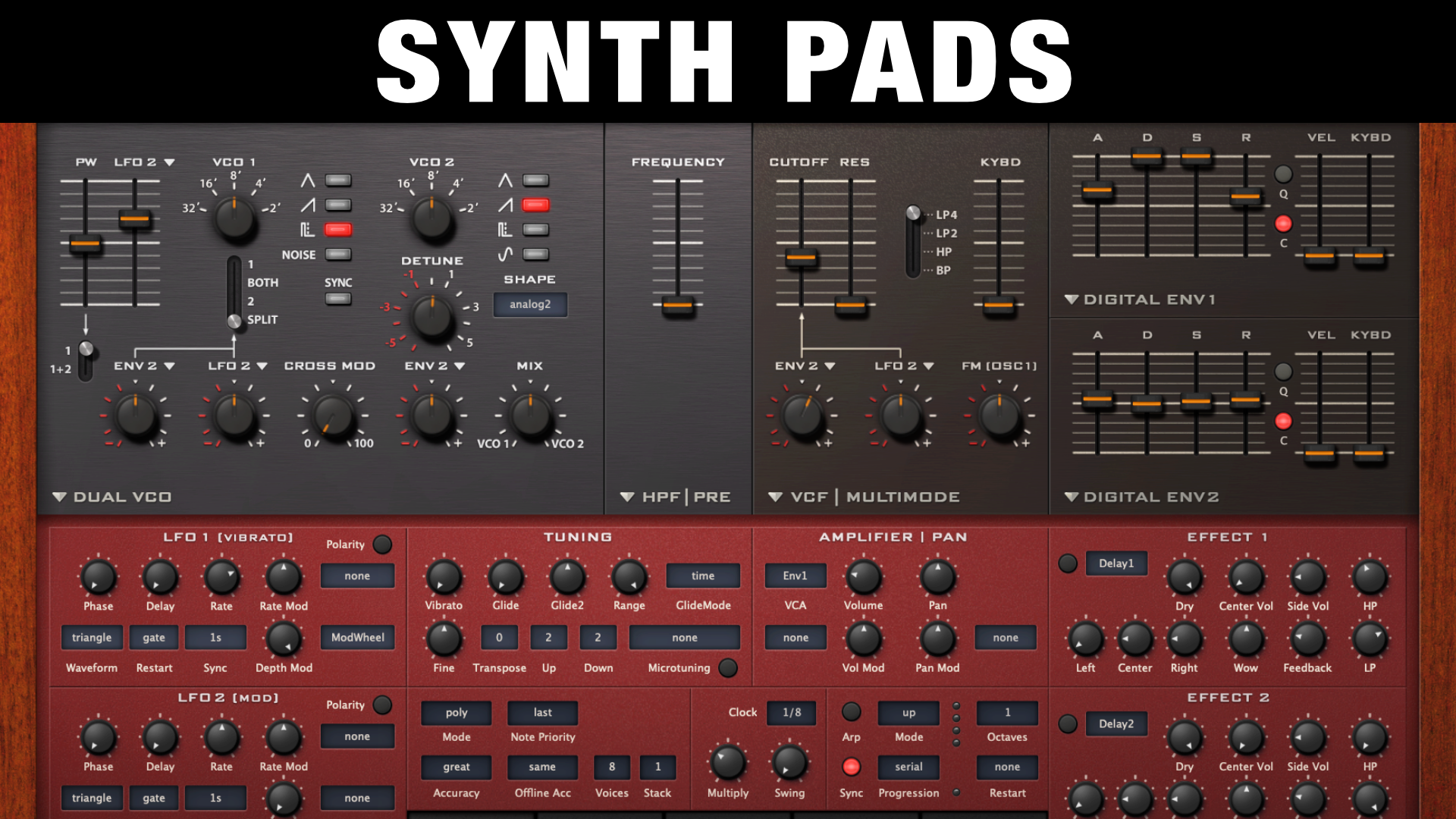 What is a Synth Pad in Music Production?
What is a Synth Pad in Music Production?
In short: a synth pad is a sustained, smooth electronic sound used in music production to add depth and texture to a musical arrangement. It is often used to create a sense of atmosphere or mood.
How are Synth Pads used?
Pad sounds are often used as a background layer in a musical arrangement to add depth and texture, and can be used in a wide variety of music genres, including electronic, pop, rock, ambient and cinematic music.
Synth pads are often used in music production to create a backdrop or foundation for other musical elements, such as melodies, harmonies, and rhythms.
They can be used to add interest and texture to a musical arrangement, and can help create a sense of atmosphere or mood.
They are also often used in film and television soundtracks to create a sense of atmosphere or to underscore emotional moments.
How to create a Synth Pad
To create a synth pad sound, a synthesizer is typically set to produce a sustained, harmonically rich sound with a slow attack and a long release time.
The sound may be further shaped using filters and other effects to create a specific character or timbre. Some common characteristics of synth pads include a smooth, flowing quality, a sense of motion or evolution over time, and a sense of depth or spaciousness.
Shape your Synth Pads with Effects
- Filters: Filters are used to shape the timbre of a sound by removing or boosting certain frequencies. Low-pass filters can be used to roll off high frequencies and create a smoother, warmer sound, while high-pass filters can be used to remove low frequencies and create a brighter, thinner sound. Band-pass filters can be used to boost or cut a narrow range of frequencies, which can be used to create a resonant or “peaky” sound.
- Reverb: Reverb is an effect that simulates the sound of an acoustic space, and can be used to add a sense of depth and space to a synth pad sound.
- Delay: Delay is an effect that creates a repeated, echoing version of the original sound. It can be used to create a sense of movement or evolution over time, or to create a sense of space or ambiance.
- Chorus: Chorus is an effect that creates a “doubling” effect by slightly detuning and delaying copies of the original sound. It can be used to add movement, depth, and complexity to a synth pad sound.
- EQ: Equalization, or EQ, is an effect that allows you to boost or cut specific frequency ranges. It can be used to shape the overall tonal balance of a synth pad sound, or to highlight or attenuate specific frequency ranges.
- Distortion: Distortion is an effect that adds grit, bite, or edge to a sound by overdriving or “clipping” the waveform. It can be used to add a sense of aggression or edginess to a synth pad sound.
